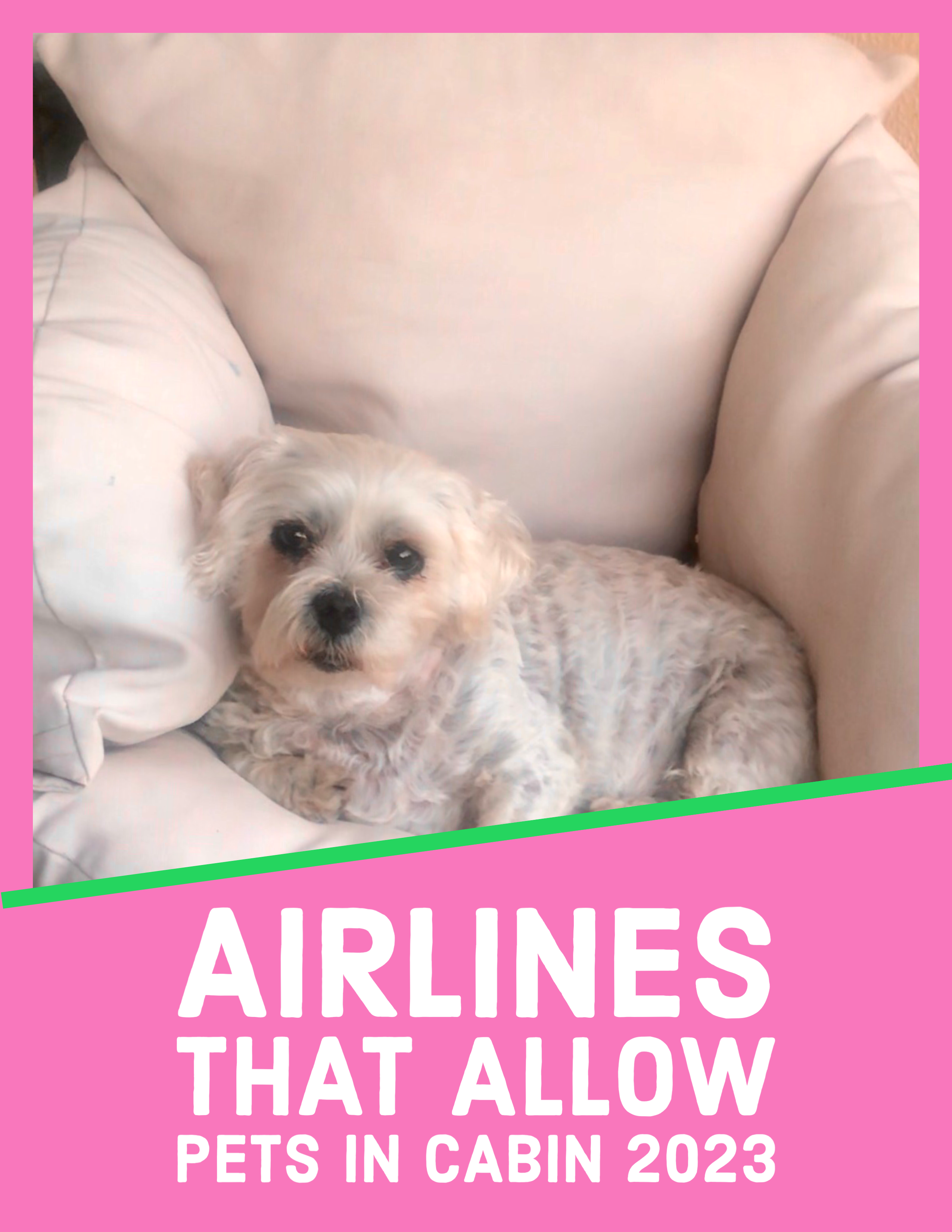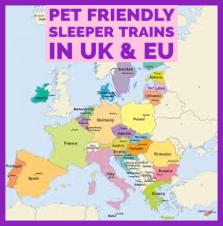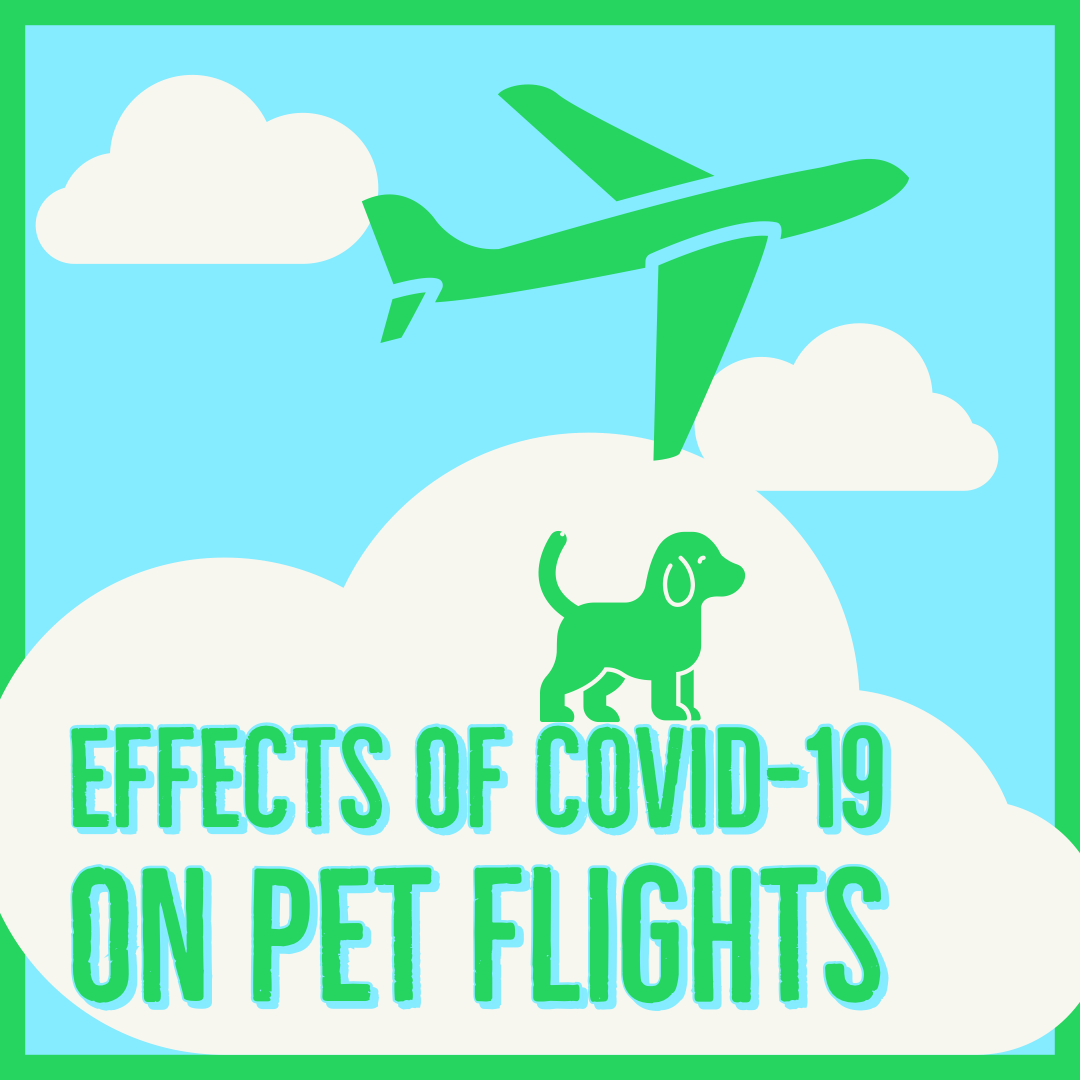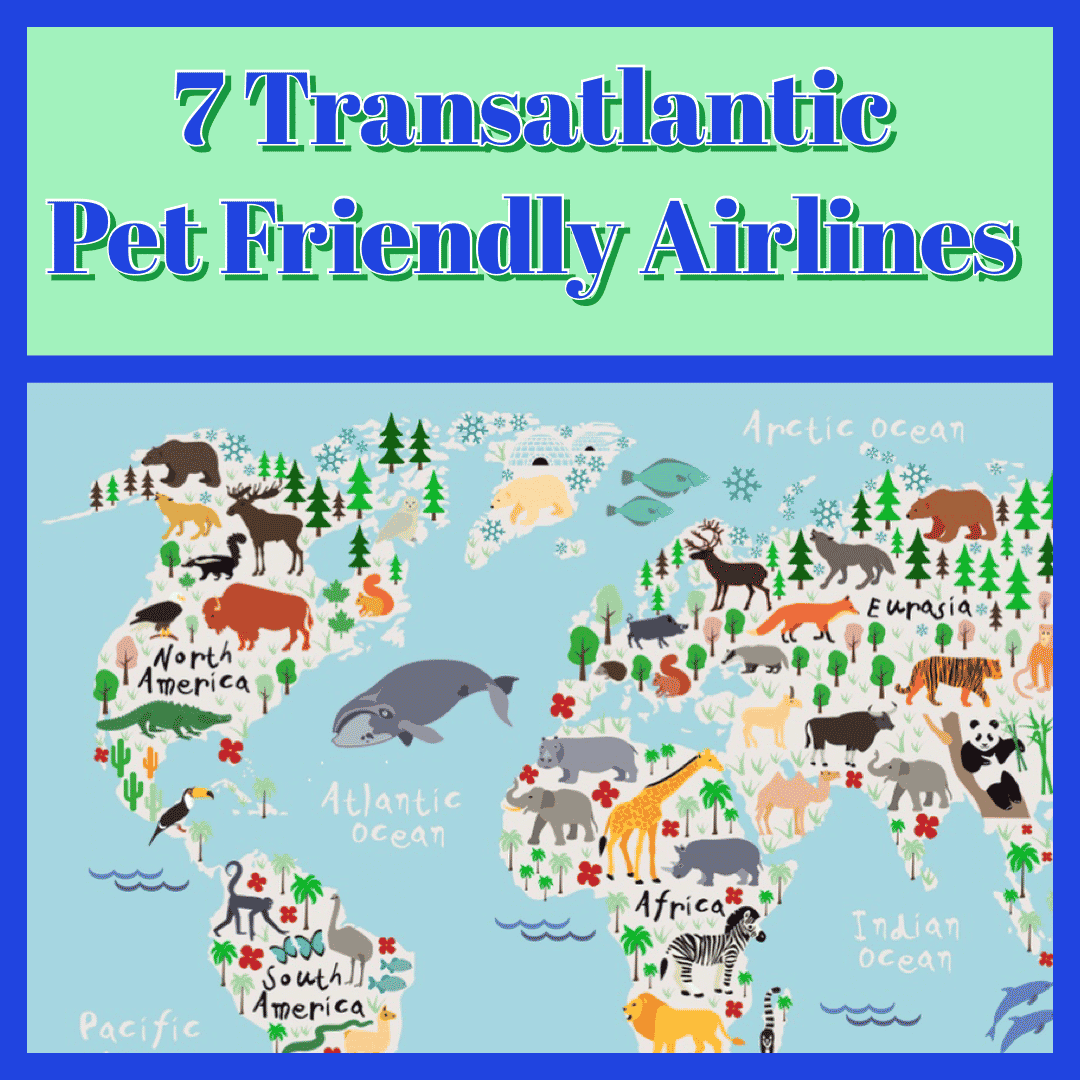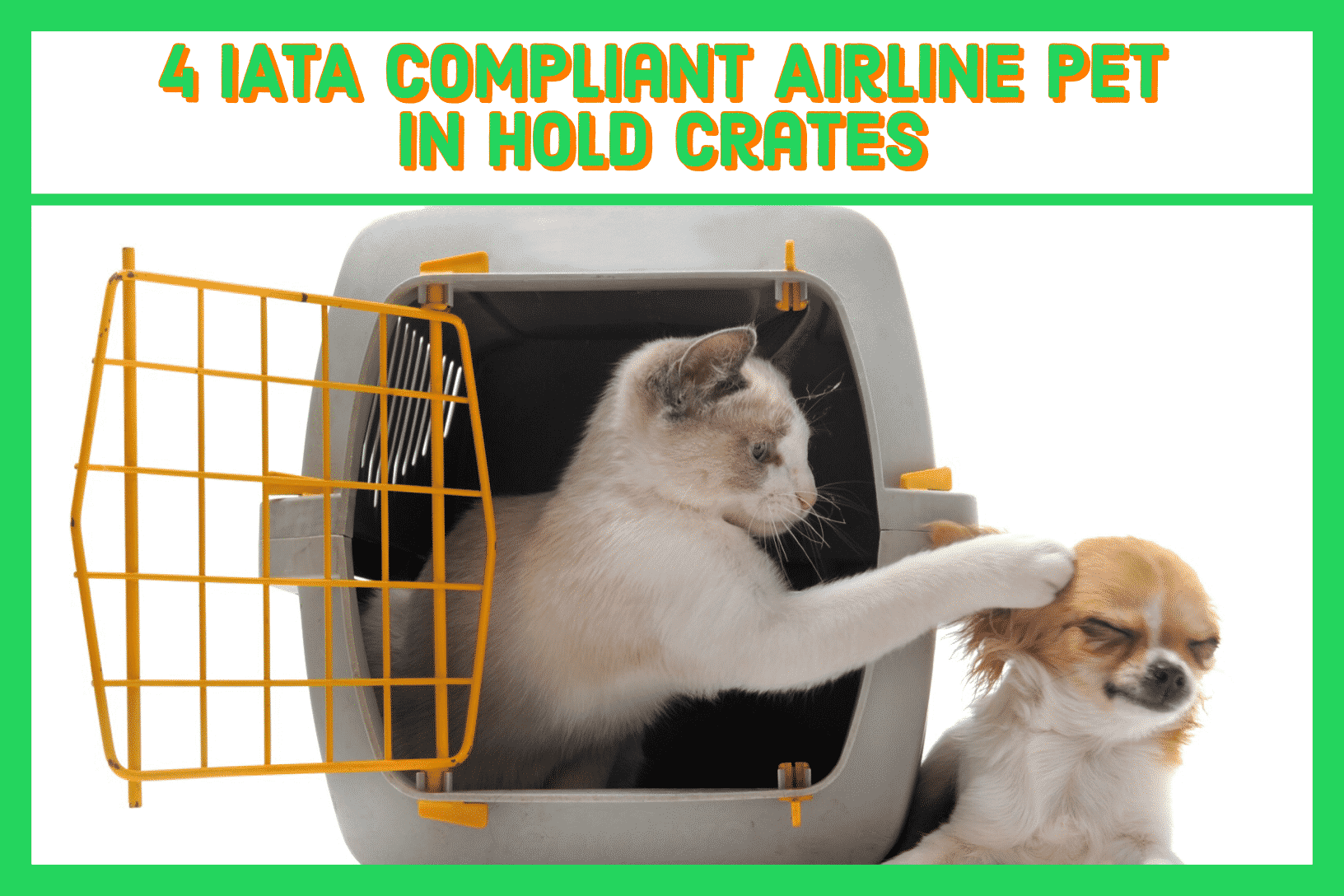Find answers to the most common pet travel questions for flying with cats and dogs, as well as pet friendly ferries and trains. If you don’t find the answer you’re looking for, feel free to leave a comment, and we’ll get back to you.
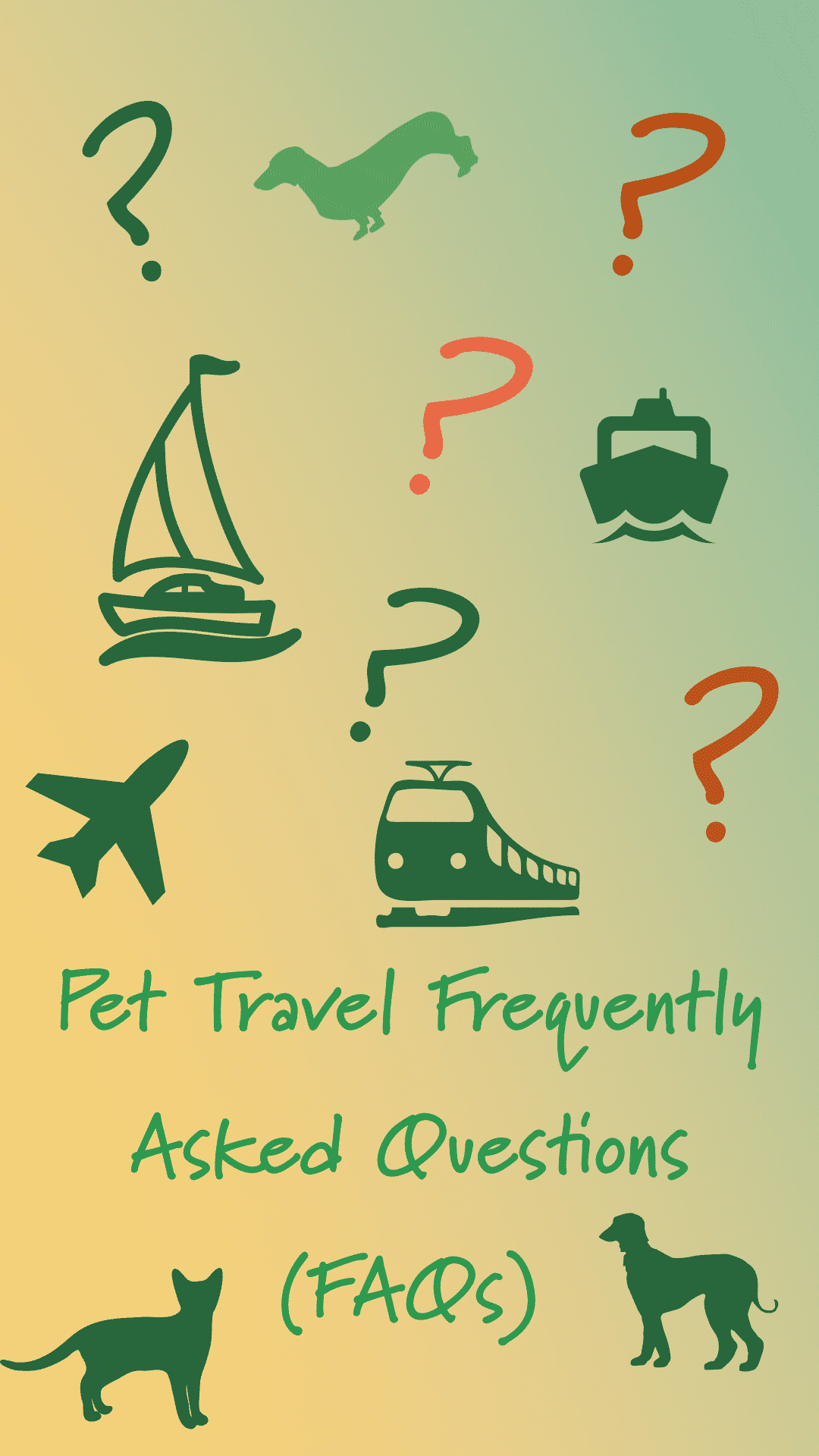
Pet Travel FAQ
Flying with Pets
Each airline’s pet travel policy stipulates the size and weight that they permit for cats and dogs flying in the cabin and the hold. If your pet meets the airline’s criteria for flying in the cabin, you will need an airline approved travel bag. For the flight duration, your pet will stay in their bag, which is slid under the seat in front of you.
Pets in the hold of an aircraft travel in the cargo hold which is climate controlled to ensure comfort. Again, you have to purchase an airline approved travel kennel that meets the dimensions specified by your chosen airline.
Authorised Assistance & Service Dogs don’t travel in a pet carrier, and occupy the floorspace of their owner’s seat on the plane.
Airlines have different policies for the size and weight of dogs permitted to travel in the cabin and cargo hold. As a guide, dogs weighing from 8kg to 75kg can usually fly in the hold of the plane.
Dogs weighing in excess of 75kg will normally have to travel with an external cargo company as freight.
However, the weight restrictions depend on your chosen airline.
There’s no IATA stipulation for the weights of cats and dogs that airlines must allow to fly in the cabin or hold.
Most airlines in Europe, the USA and Canada permit small pets (under 8kg) to fly in the cabin with you. The weight allowed depends on the policy of your chosen airline.
Examples of airlines that allow small pets in the cabin are Air France, American Airlines, Iberia, Lufthansa, Tap Air Portugal, Volotea and Vueling.
Check out our Airline Policies page for details of the myriad of airlines that permit small pet cats and dogs to fly in the cabin of the plane.
You’ll find that most budget airlines in the UK don’t have a pet friendly travel policy. For instance, neither EasyJet or Ryannair allow pets to fly in the cabin or hold. Service and Assistance Dogs are permitted though.
The good news is that most budget airlines in Europe, the USA and Canada do allow pets on board, in both the cabin and hold. So you can enjoy a purse and pet friendly holiday!
If you’re flying from the UK with a small cat or dog, you can travel with Iberia, Lufthansa, Tap Air Portugal, KLM and Air France with your pet in the cabin. Of course, your pet must meet the weight and size limitations set by the airline.
No airlines currently permit pet cats and dogs to enter the UK in the cabin of a plane. Only service dogs are permitted on inbound flights to Scotland, Wales, England and Northern Ireland. Although if you have a private jet, you’re good to go!
Prices vary with different airlines for flying with a cat or dog, and the costs involved also depend on the route, flight duration and whether or not your pet is flying in the cabin or hold of the plane. Have a look at our detailed airline pet travel policies for the cost of flying with your cat or dog in the cabin or hold with each airline. As a guide, you can expect to pay €40-€50 for a short flight (1-4 hours).
Transatlantic flights are slightly more expensive, and some airlines do allow you to offset the weight of your dog or cat in their carrier against your own baggage allowance for the flight.
Travelling with Pets by Ferry or Rail
Most ferry services offer the option to leave dogs in the car during sailing. Understandably, a lot of people would rather have their dog on board with them.
Thankfully, many ferry companies allow dogs to travel either in on board kennels or pet friendly cabins during crossings. However, this varies between ferry providers, and not all choices are available on every route. Check out our ferry pet travel policy pages for details of the routes and pet travel options available for each ferry service.
Only registered Assistance & Service Dogs are permitted on the Eurostar train from Calais, France to Folkestone, England (UK). However, if you have a vehicle, pets are permitted on the Eurotunnel Le Shuttle service.
Yes, you can! But only with certain ferry providers on specific routes. Condor Ferries allows foot passengers with pets to travel between the UK and Channel Islands, while DFDS allows dogs to sail with foot passengers between Newhaven and Dieppe, as well as Newcastle and Amsterdam. Our pet friendly ferries pages tell you everything you need to know.
Documentation & Medication
If you’re taking a dog to the UK (Scotland, England, Wales & Northern Ireland), Ireland, Finland, Malta or Norway, your pooch must receive a Tapeworm Treatment no less than 24 hours, and no more than 120 hours (5 days) before your arrival, unless you are travelling between the UK, Ireland, Finland Malta or Norway (eg. from Ireland to Finland). The vet must record the treatment on the Pet Passport or Animal Health Certificate.
The documentation that you need depends on your origin and destination. For international pet travel, the most commonly used documents are a Pet Passport, Animal Health Certificate or Pet Import Permit. You only need one of these to fly with your cat or dog in Europe, the USA and Canada. If you have a Pet Passport issued by an EU country, this can be used for pet travel to and from the EU. However, if your Pet Passport was issued by a non-EU country, you’ll need an Animal Health Certificate. Our Regulations pages tell you everything you need to know when travelling with your pet.
Pet passport prices for cats and dogs vary between countries. If your pet is already microchipped, then the price for the pet passport and rabies vaccination will be around €70-€100, depending on the country of origin, and the veterinarian surgeon used. Should your pet also require a microchip, the cost will increase by around €20.
In terms of pet quarantine, countries are classified on the rabies risk as:
rabies free
rabies controlled
high rabies
Whether your dog will need to spend time in quarantine very much depends on the classifications of the country you are flying from, and your destination country.
Usually, travelling from one ‘rabies free’ country to another doesn’t require quarantine, although there are exceptions. For example, from the UK to Australia, your dog will need to be quarantined for 10 days. Dogs arriving in Iceland must be quarantined for 2 weeks.
Your dog may also require quarantine in New Zealand, Hong Kong, Singapore, Iceland, Japan, Taiwan, Malaysia and Fiji, along with Hawaii and Guam in the USA.
Remember that if you arrive in a country that doesn’t require quarantine, but you have not met the requirements of that country’s pet travel scheme (eg. passport, microchip, rabies vaccinations, tapeworm etc), your pet will usually have to spend time in quarantine.

